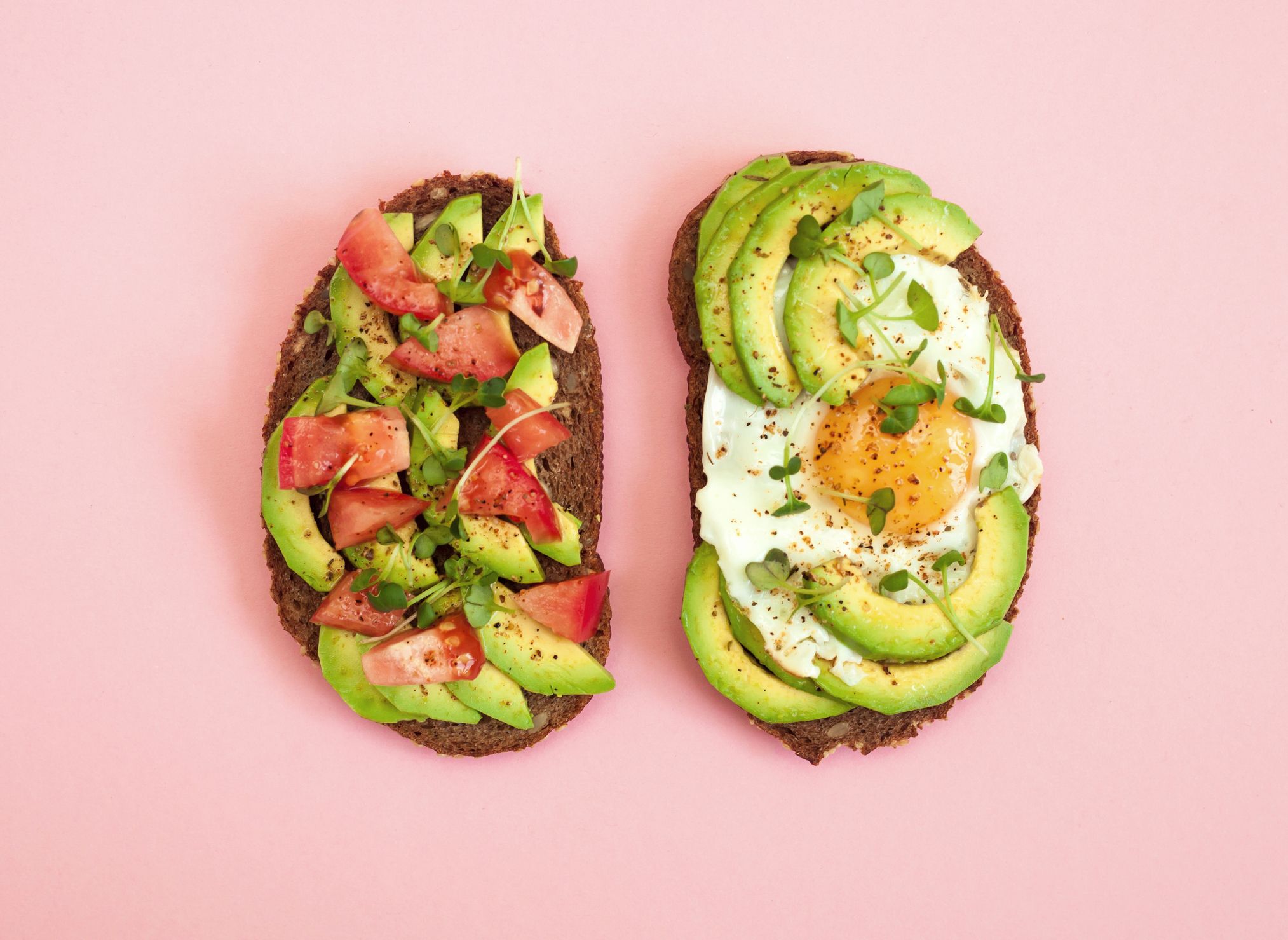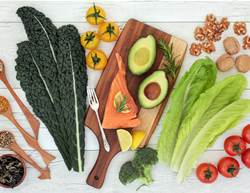What if we told you just one change a day could help you cut back on or eliminate sugar in your diet? Well, it’s not too good to be true, and this seven-day sugar challenge will teach you how.
Day 1: Ditch the sugary snacks
Get rid of easy-to-grab sweets in your pantry or drawer— biscuits, energy bars, muffins, lollies —and you’re already slashing a bunch of unnecessary calories. A good rule of thumb is to stick to 25 grams (or 6 teaspoons of sugar) per day if you’re a woman; 36 grams (or 9 teaspoons) if you’re a man. When you notice a sugar craving, stop and take a moment to figure out what’s really going on. Addressing what’s truly driving the urge to eat sugar sets you up for success. Here are the top contenders:
✔️ Your blood sugar is too low
That means you’re skipping meals or spacing them out too much, or you’re not eating enough blood sugar-steadying protein. So, pair a sugary snack with protein—like mixed nuts and no-sugar-added dried fruit. The healthy fats in the nuts slow absorption of the fruit’s natural sugars so you get back into balance and cravings stop. When you do have a meal, add grilled chicken or chickpeas to that pasta salad.
✔️ You’re tired
As in, you’re short on sleep. Caffeinate with coffee or tea instead of a soda; take a brief walk, or take a nap.
✔️ You’re having PMS or are in perimenopause
Inadequate levels of progesterone or estrogen trigger cravings for sweets by cutting the feel-good brain chemicals serotonin, dopamine, and norepinephrine, which leads to insomnia, headaches, fatigue, or mild depression. Try eating edamame, because soy contains compounds called isoflavones that mimic estrogen in the body. If that doesn’t curb the sugar cravings, go for nature’s sweet treats—an orange, a handful of berries, carrot sticks, or a small baked sweet potato.
Day 2: Think before you eat
Any time you would normally use sugar or artificial sweetener, notice your impulse and then hold back. Be mindful of your use of so-called “natural” sweeteners like agave or honey—your body handles those the same way as other sugars. Eat your porridge minus that sprinkle of brown sugar on top (add 1⁄4 of a sliced banana instead) and take your coffee with a shake of cinnamon instead of flavoured syrup. Eliminating added sugar might leave your taste buds yearning for sweetness. Instead, get your sweet fix in with these creative hacks:
- Add vanilla extract. While it’s not actually sweet, vanilla reminds us of ice cream, cake, and other desserts. Add a few drops—or the contents of a vanilla bean—to tea, yoghurt, porridge, nut butters, or smoothies.
- Try toasted unsweetened coconut. These flakes are naturally sweet and add nuttiness and crunch to breakfast or dessert. Opt for the large flakes over tiny shreds; more surface area means more flavour on your tongue.
- Caramelise onions. If you’re making tomato sauce or soup, skip the sugar and caramelize any onions in the recipe instead of just sautéing them. Their natural sweetness subs in well.
- Create contrast with salt. Because sugar and salt are polar opposites, a dash of salt can intensify sweetness. Try it on foods that are naturally a little sweet, like sweet potatoes, butternut pumpkin soup, or sliced fruit.
Day 3: Ban sugary drinks
You know soft drink has added sugar, and so does a vanilla-flavoured coffee drink. But the sugar in other drinks might not be so obvious, like coconut water (some brands add sugar), bottled iced teas, flavoured waters, and even artificially sweetened drinks. Chances are, you have first-hand experience with how hard it is to leave behind the caffeine high, the sweet jolt, and the comforting ritual of popping open a can.
Take heart: Most people can’t just drop a habit like soft drink; they need to replace it. To help you stick to your commitment to ditch sugary drinks, make it a point to avoid sugar triggers in the first place. Think about it this way: If your soft drink buzz is a caffeine thing, switch to unsweetened coffee, tea, or dark chocolate. If stepping out for an afternoon latte is all about boredom, make things less dreary. Call a friend for a chat instead.
Day 4: Learn to read labels
Start reading ingredient labels like it’s your job. Some flavoured fruit yoghurts, cereals, and prepared oatmeal pack nearly six teaspoons of added sugar per serving, which is the maximum amount of added sugar recommended for women in an entire day. Sweeten your favourite foods with whole fruit instead. Be on the lookout: Dressings, pasta sauces, crackers, tomato sauce, and soups are also common sources of hidden sugar. Here are some other tips to note while reviewing the panel:
- See where sugar is listed in the ingredients list. Food ingredients are listed in order of volume, from highest to lowest amount.
- Rethink the daily values. The Nutrition Facts panel displays a percent daily value for added sugar and other nutrients.
- Look for sugar by another name. There are at least 57 different names for it! To tell if a product contains added sugars, check the list of ingredients. First line of defence: Look out for any ingredient ending in “ose,” such as maltose or sucrose.
Day 5: Make over your grains
Consider refined grains (i.e white flour, white rice, and white bread) basically just sugar in the form of simple carbohydrates. In fact, you might not think you have a sweet tooth, but if you’re eating bagels and pasta on a regular basis, you’re probably fooling yourself, according to Brooke Albert, founder of B Nutritious. “Pizza is basically dessert. Your body consumes it just like a slice of cake,” she says.
The fix: Eat carbs, but make them wholegrain. Brown rice, sprouted-grain bread, and quinoa are all your friends. Try eating up to three servings a day of 100% whole grains. People who do so are 76 times more likely to get the most fibre—which has been linked with weight loss.
Day 6: Watch the booze
Red wine may have phytochemicals and health benefits, but the truth is that when we drink alcohol, it turns to sugar in our bodies. If you decide to have a drink, stick to a light beer, a small glass of wine, or one shot of distilled spirits (vodka, gin, rum, Scotch, bourbon) sans mixers. Most mixers—even tonic waters—have added sugar or are fruit juice–based, so avoid those.

Day 7: Celebrate with fruit
By today, you’ve reset your taste buds for less sweetness. Take a moment to notice how your usual sliced banana with cereal or the apple in your brown-bag lunch now tastes sweeter. Continue to enjoy fruit for snacks or add it to main dishes and salads whenever you can. Whole fruit also packs fibre, vitamins, and water that keep you feeling satisfied.









.png&h=193&w=250&c=1&s=1)

